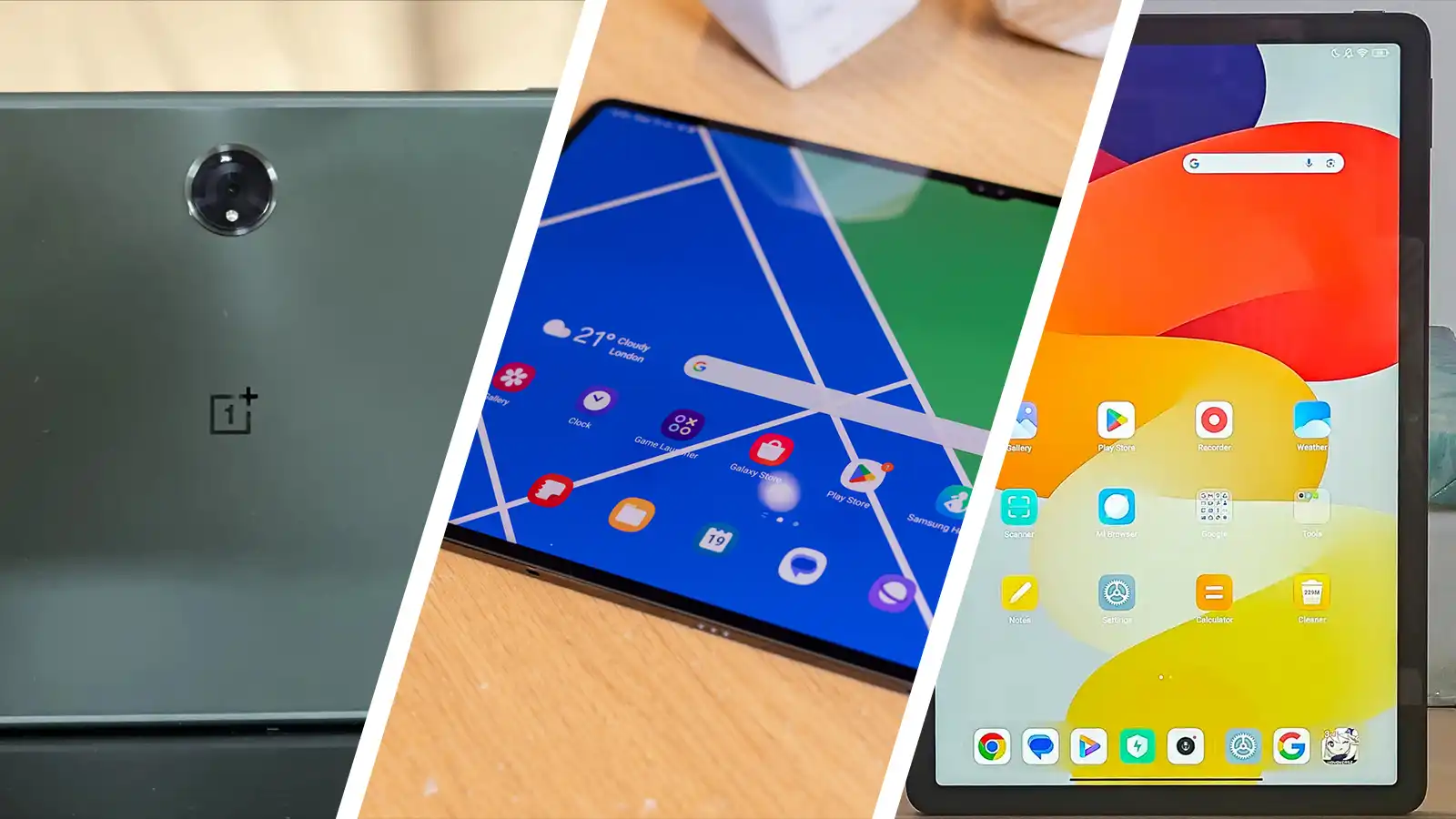
Samsung Galaxy Tab S9
Key Features
- Display: Stunning AMOLED 120Hz display for immersive viewing.
- Performance: Powerful SoC with up to 12GB of RAM for multitasking.
- Battery Life: Large battery capacity for all-day use.
- S Pen: Included for precise handwriting and drawing.
- Samsung DeX Mode: Transforms tablet into a desktop-like experience.
- 5G Connectivity: Fast network speeds for online classes and remote learning.
The Galaxy Tab S9 excels in performance, battery life, and versatile features like the S Pen and Samsung DeX Mode. Its 5G connectivity ensures students stay connected on the go.
Samsung Galaxy Tab A9 Plus
Key Features
- Display: 11-inch display with 1920×1200 resolution and 90Hz refresh rate.
- Performance: Decent processor and sufficient RAM for basic tasks.
- Battery Life: Up to 15 hours of usage on a single charge.
- Expandable Storage: Supports microSD card for increased storage.
- Parental Controls: Built-in controls for monitoring screen time and app usage.
The Galaxy Tab A9 Plus offers good performance and impressive battery life at an affordable price, making it ideal for students needing a reliable tablet.
Samsung Galaxy Tab S9 FE
Key Features
- Display: Compact 10.9-inch display with 1920×1080 resolution.
- Performance: Mid-range processor with up to 6GB of RAM.
- Battery Life: Maximum battery life of 18 hours.
- S Pen: Available as an accessory for note-taking.
- 5G Connectivity: Fast network speeds for online classes and remote learning.
The Galaxy Tab S9 FE is a compact, reliable device with impressive battery life and 5G connectivity, perfect for students on a budget.
OnePlus Pad
Key Features
- Display: 11.6-inch display with 2560×1600 resolution.
- Performance: Powerful processor with up to 12GB of RAM.
- Battery Life: Extensive battery life with fast charging support.
- Accessories: Dedicated keyboard and stylus for a versatile workstation.
- Price: Affordable option at just shy of $500.
The OnePlus Pad combines powerful performance, extensive battery life, and affordability, making it an excellent choice for students.
Lenovo Tab P12 Pro
Key Features
- Display: 12.6-inch display with 2560×1600 resolution.
- Performance: Powerful processor with up to 12GB of RAM.
- Battery Life: Impressive battery life with fast charging support.
- Stylus: Included for precise handwriting and drawing.
- 5G Connectivity: Fast network speeds for online classes and remote learning.
The Lenovo Tab P12 Pro offers powerful performance, impressive battery life, and versatile features like the stylus and 5G connectivity, making it perfect for students.
Onyx Boox Note Air3 C
Key Features
- Display: E Ink display for reading and note-taking.
- Performance: Dedicated processor for E Ink displays.
- Battery Life: Solid battery life with fast charging support.
- Stylus: Included for precise handwriting and drawing.
- Compatibility: Compatible with various note-taking apps.
The Onyx Boox Note Air3 C is ideal for students preferring an E Ink display for reading and note-taking, offering solid battery life and precise stylus capabilities.
Final Thoughts
Choosing the best Android tablet for school use involves considering performance, battery life, display quality, and compatibility with educational apps. The Samsung Galaxy Tab S9 stands out with its powerful performance and versatile features. However, other options like the Samsung Galaxy Tab A9 Plus, Samsung Galaxy Tab S9 FE, OnePlus Pad, Lenovo Tab P12 Pro, and Onyx Boox Note Air3 C also offer impressive features suitable for various student needs. Each tablet has unique strengths, ensuring there's a perfect device to meet every student's requirements.
